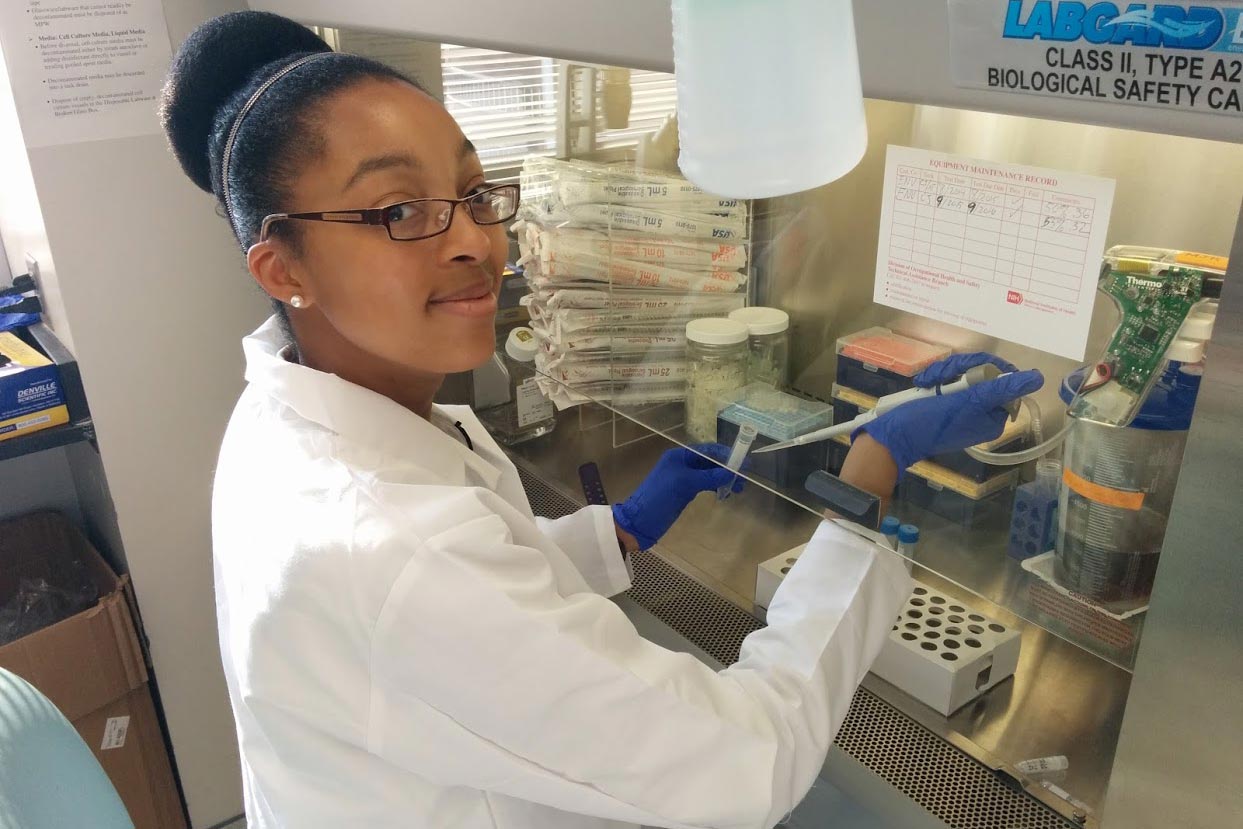Tiahna Spencer’s medical education did not stop for the summer. She returned for her second year at the UConn School of Medicine with the experience of being a research intern at the National Institutes of Health (NIH), the largest biomedical research agency in the world.
For eight weeks she was in Bethesda, Maryland, at the National Institute of Arthritis and Musculoskeletal and Skin Diseases in the lab of Dr. Mariana Kaplan, renowned researcher of systemic autoimmune diseases. That institute is one of 27 that comprise the NIH, conducting research in different disciplines of biomedical science.
“While I had previous experience in research, it wasn’t like anything I was doing in this lab,” Spencer says. “One of the biggest adjustments was learning all the techniques for the experiments and how to execute them properly.”
Spencer worked among the 1,200 principal investigators and more than 4,000 postdoctoral fellows who staff the institutes. “Here I was with limited knowledge about what we’re doing and the disease itself. I was dealing with a learning deficit at the start, but was enthusiastic to make up for it and learn.”

She would start the day reading articles on rheumatoid arthritis and current theories as to what might cause it. Spencer then conducted experiments using cells from patients with the goal of determining the pathogenesis of rheumatoid arthritis.
Spencer’s mentor at the NIAMS was Carmelo Carmona-Rivera, a postdoctoral fellow in the Kaplan lab. But it was one of her mentors at the UConn School of Medicine – Dr. Cato T. Laurencin, University Professor, Albert and Wilda Van Dusen Distinguished Professor of Orthopaedic Surgery, and Director of the Institute for Regenerative Engineering at UConn Health – who put the idea in her head and encouraged her to apply for the internship.
As an undergraduate, Spencer conducted three years of research, wrote a thesis, several abstracts, and a second author publication, Laurencin noted.
“I am convinced she will continue being a successful physician/researcher,” Laurencin wrote in his letter of recommendation to the NIH. “She has the right mix of intelligence, initiative and work ethic to make her succeed in anything.”
Spencer says there’s no limit to what NIH interns can learn if they make the most of the experience interacting with scientists from so many different countries and backgrounds.
“The NIH campus is so diverse, and that’s one of the things I really loved about it,” she says. “Learning from all these different people really changes your mindset. You’re exposed to different points of view in terms of their advice, personally or professionally.”
While she’s not sure of her career path just yet, Spencer is interested in orthopedic surgery and in emergency medicine.
“Since my first experience with research in undergrad, I knew that I would combine my career of being a physician with research,” she says. “What I appreciated about this opportunity is it that it gave me more experience in the different research fields as well as a clearer idea of what I should expect as a physician researcher.”



